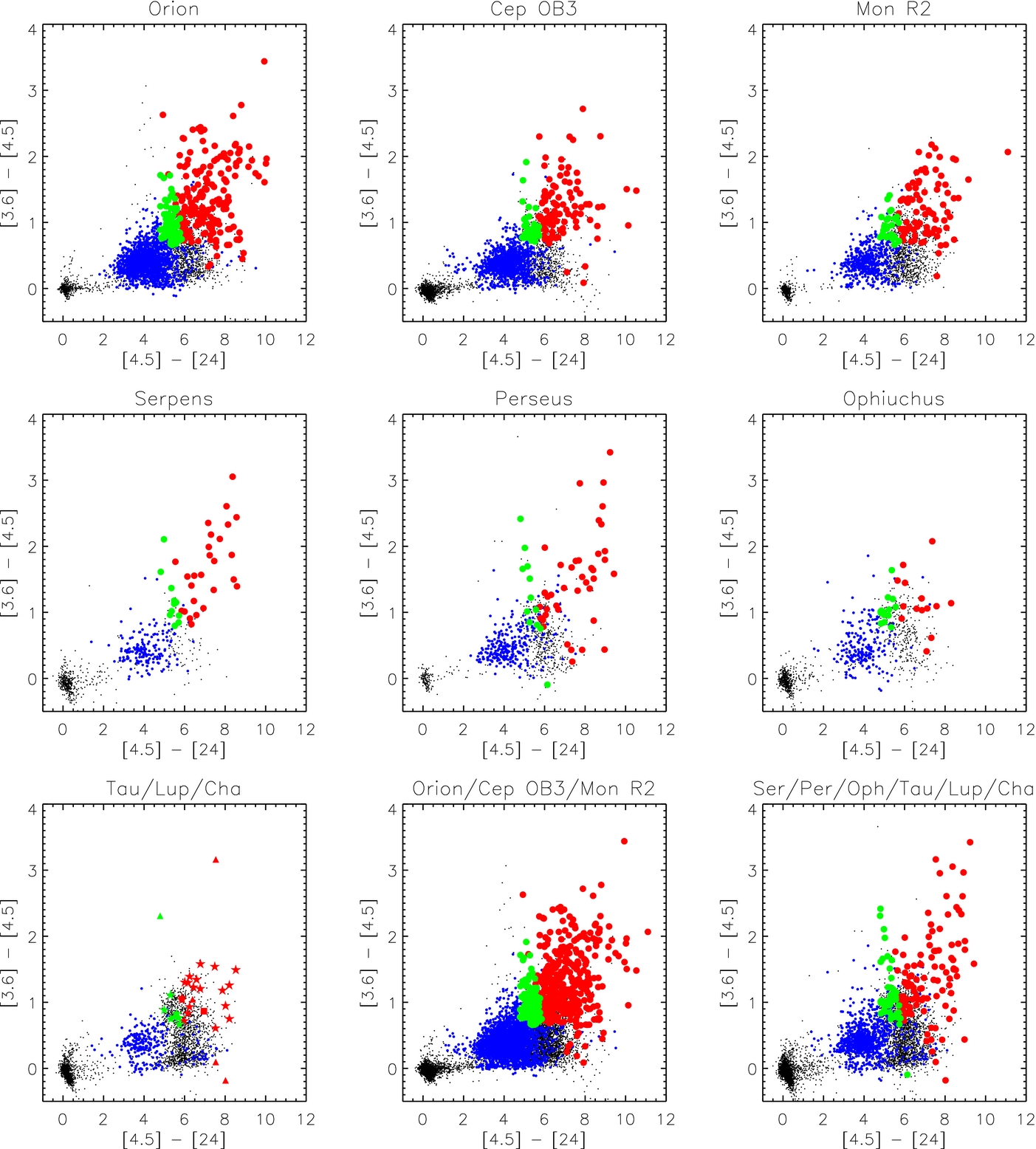
Luminosity Functions of Spitzer-identified Protostars in Nine Nearby Molecular Clouds
Abstract
We identify protostars in Spitzer surveys of nine star-forming molecular clouds within 1 kpc: Serpens, Perseus, Ophiuchus, Chamaeleon, Lupus, Taurus, Orion, Cep OB3, and Mon R2, which combined host over 700 protostar candidates. Our diverse cloud sample allows us to compare protostar luminosity functions in these varied environments. We combine photometry from 2MASS J, H, and Ks bands and Spitzer IRAC and MIPS 24 micron bands to create 1 - 24 micron spectral energy distributions (SEDs). Using protostars from the c2d survey with well-determined bolometric luminosities (Lbol), we derive a relationship between Lbol, L_MIR (integrated from 1 - 24 microns), and SED slope. Estimations of Lbol for protostar candidates are combined to create luminosity functions for each cloud. Contamination due to edge-on disks, reddened Class II sources, and galaxies is estimated and removed from the luminosity functions. We find that luminosity functions for high mass star forming clouds peak near 1 Lsun and show a tail extending toward luminosities above 100 Lsun. The luminosity functions of the low mass star forming clouds do not exhibit a common peak, however the combined luminosity function of these regions peaks below 1 Lsun. Finally, we examine the luminosity functions as a function of the local surface density of YSOs. In the Orion molecular cloud, we find a significant difference between the luminosity functions of protostars in regions of high and low stellar density, the former of which is biased toward more luminous sources. This may be the result of primordial mass segregation, although this interpretation is not unique. We compare our luminosity functions to those predicted by models and find that our observed luminosity functions are best matched by models which invoke competitive accretion, although we do not find strong agreement of the high mass star forming clouds with any of the models.